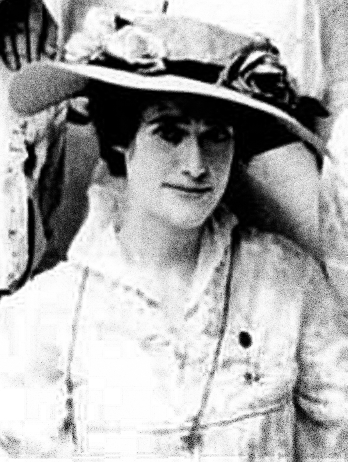Adele Clark
| Adele Goodman Clark | |
|---|---|

Clark in 1916
|
|
| Born |
September 27, 1882 Montgomery, Alabama, U.S. |
| Died | June 4, 1983 (aged 100) Richmond, Virginia, U.S. |
| Education | Virginia Randolph Ellett School |
| Alma mater | New York School of Art |
| Occupation | Artist, activist |
| Partner(s) | Nora Houston |
| Parent(s) | Robert and Estelle (née Goodman) Clark |
Adele Goodman Clark (September 27, 1882 – June 4, 1983) was an American artist and suffragist.
Clark was born in 1882 in Montgomery, Alabama to Robert Clark, a railroad worker originally from Belfast, and Estelle Goodman Clark, a Jewish music teacher originally from New Orleans.
The family lived in New Orleans, Louisiana and Pass Christian, Mississippi before moving to Richmond, Virginia in 1894. Clark attended the Virginia Randolph Ellett School, and in 1906 went to the New York School of Art on a scholarship, studying under artists including Robert Henri and William Merritt Chase.
Clark's activist career began in 1909, when she and 18 other women, including Nora Houston, Ellen Glasgow, Lila Meade Valentine, Kate Waller Barrett, and Mary Johnston, founded the Equal Suffrage League of Virginia; she served as its secretary for one year, and also as a committee chair and head of the group's lobby in the Virginia General Assembly. In 1910, she was a delegate to the National American Woman Suffrage Association convention in Washington, D.C. Clark and her partner Houston also set up their easels on a street corner in downtown Richmond, speaking about women's suffrage and handing out leaflets to people who approached.
When the Art Club of Richmond dissolved in 1917, Clark and Houston opened a studio together, and two years later founded the Virginia Academy of Fine Arts and Handicrafts. In the months before the 1920 elections, when there were threats and rumors of spurious challenges against black women voters, Clark and Houston invited black leaders to their studio to plan ways to confront the issue. They decided that the white suffragists would patrol polling locations in cars. Clark and Houston continued to be involved in the interracial movement after this election. They also participated in art-related activism, campaigning for the resurrection of the Academy of Sciences and Fine Arts, which opened in 1930 as the Richmond Academy of Arts and later became the Virginia Museum of Fine Arts.
...
Wikipedia
